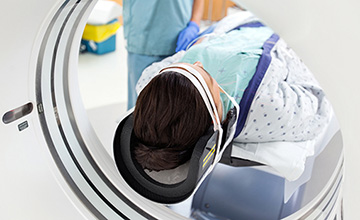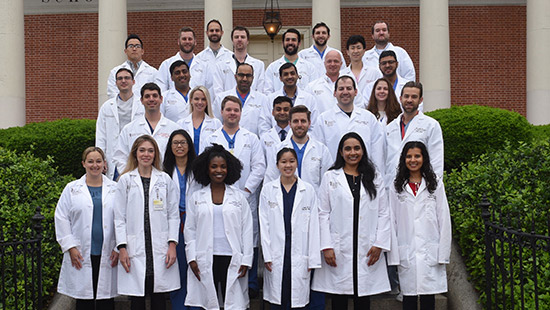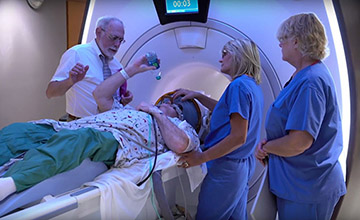Diagnostic Radiology Residency
The Diagnostic Radiology Residency Program at the University of Maryland offers an ideal blend of diverse clinical material, comprehensive teaching, and abundant research opportunities. We promote the concept of one-on-one learning, where residents observe, discuss, and work closely with faculty members in charge of each rotation.
Most importantly, the hallmark of our program is unsurpassed collegiality. Residents, faculty, technologists, and administrative staff treat each other with respect and embody team spirit. The consistently supportive environment of our department allows residents to learn, to grow, and to thrive.
Our Diagnostic Radiology Faculty
Our faculty includes nationally recognized leaders who share their deep experience in:
- Trauma imaging
- Cardiac imaging
- Molecular imaging
- Interventional neuroradiology
- Global health
- Radiology education
- Information technology and artificial intelligence
Our Facilities
Our 700+ bed tertiary-care hospital has a renowned organ transplant program and an NCI-designated comprehensive cancer center. Our statewide network of hospitals and outpatient centers provide supplemental, subspecialty educational opportunities from varied populations. Learn more about our facilities.
Why Our Diagnostic Radiology Residents Succeed
Clinical Experience
All resident clinical duties are supervised by faculty throughout the four years, but with increasing independent responsibilities over time, residents gain sufficient experience in every facet of Diagnostic Radiology to become fully capable practitioners by the time they graduate.
Teaching Experience
The education of others is an integral part of our residents' own educational experience. All residents have the responsibility and opportunity to hone their teaching skills by instructing medical students and fellow residents in a variety of educational formats.
Research Opportunities
Research by residents is strongly encouraged and well supported. Many of our residents have won awards for outstanding scientific exhibits, paper presentations, and computer projects.








